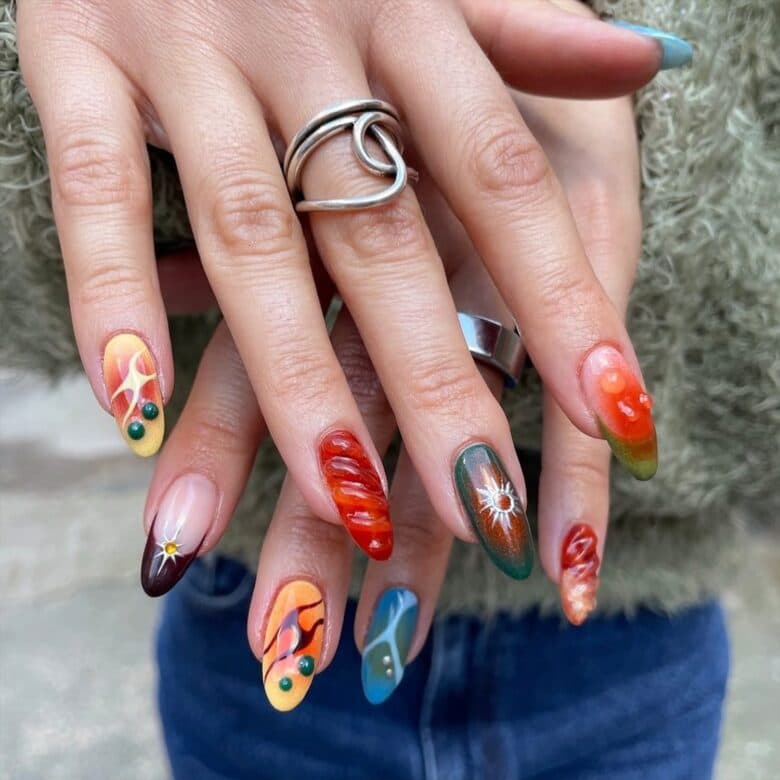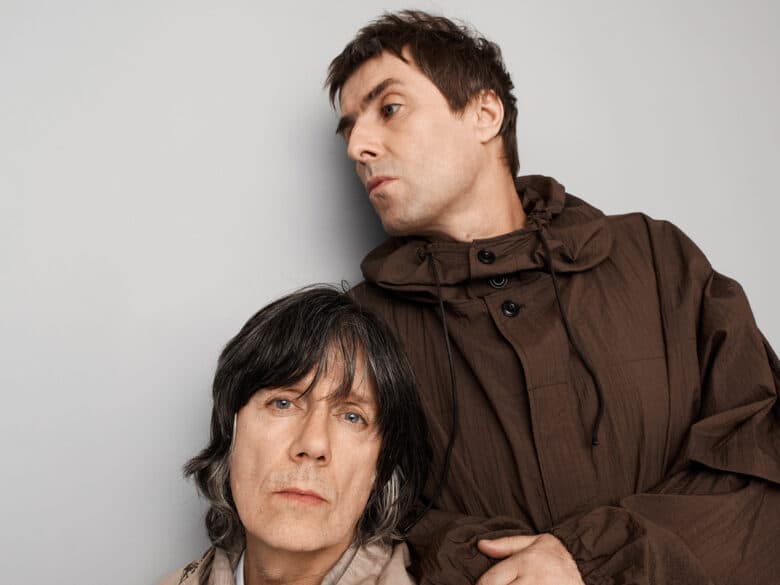The artist and the work: Portraits capturing creative solitude
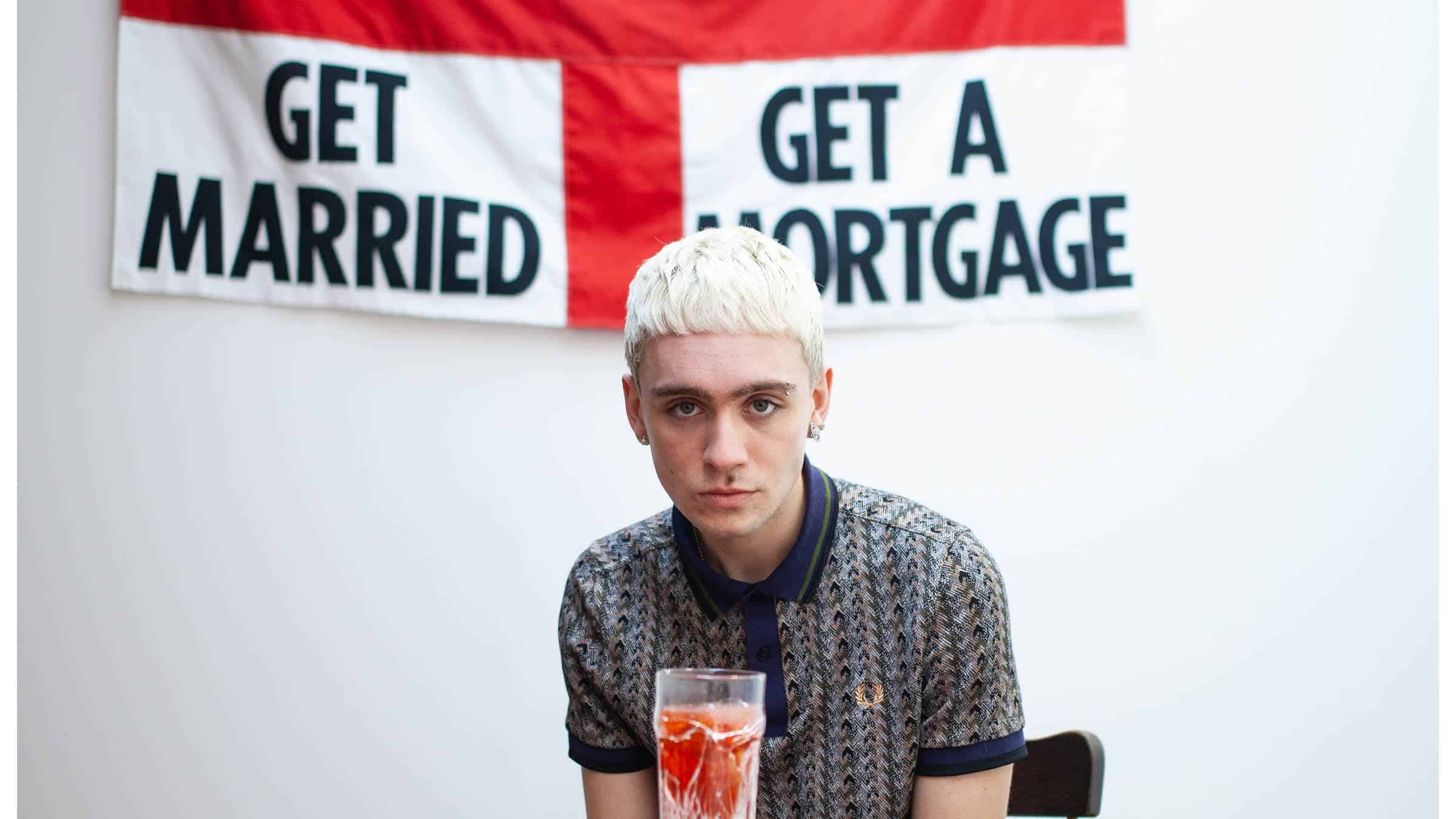
An artist’s studio is both their playground and their battleground. You either meet an artist who wants nothing more than to give you a whistlestop tour of their studio, subtly pointing out the different sources of inspiration around the room like paint splattered coffee table books, an unwashed mug, a barbie doll without its head and their smoking chair, or you meet one who wants to keep their isolated, creative space separate from the outside world.
For those who have been fortunate enough to be welcomed into an artist’s space, it becomes apparent early on what an unsung privilege it can be. It feels like a creative secret being opened up to the world, one that seems entirely reserved for artists in particular (writers can hardly show someone around their Word doc). And only occasionally has that opportunity been opened up to everyone and anyone, when photographers have helped to bridge the gap between the audience and the process. Think Tseng Kwong Chi’s photos of Jean-Michel Basquiat laying on his work, or Jane Bown capturing Francis Bacon sitting amongst the endearing chaos of his studio, taking photos of artists in their spaces isn’t necessarily anything new, but how we receive them is.
Peckham-based photographer Brynley Odu Davies spent three years since the Covid-19 pandemic began travelling up and down the UK taking portraits of over two hundred artists. When he started out, Davies was navigating the changing rules of the pandemic, maintaining socially distanced conversations over cups of tea for half an hour or so before asking the artist to take their place in front of their work for the portrait. Artist Portraits now sits as a display of intimate moments of creative resilience and seclusion at a time of complete uncertainty.
Featuring artists including Corbin Shaw, Marcus Nelson, Olivia Sterling, Elsa Rouy, and Trackie McCleod, the 27-year-old’s show wipes away at the steamed window for audiences to see into the isolated worlds of the UK’s most exciting artists. Even though the pandemic is little more than a distant, triggering memory, what is striking about Davies’ exhibition is that it shows more than the perseverance and hard work of artists during that time. Some photographs in Artist Portraits were taken during the pandemic and others were taken after, and most people would be hard pressed to tell the difference – testament to the perpetual state of creative ambition amongst artists regardless of what’s going on beyond their walls.
We sat down with Brynley ahead of the opening of Artist Portraits at Studio West to find out how the project began, why it was important for him, and how he’s doing it differently…
Hey, Brynley! To kick us off, why did you want to start this project?
Brynley Odu Davies: I was in Bath in lockdown and I was photographing musicians beforehand. And then I came back to London and I just needed to take pictures and I needed a subject matter and I photographed my friend Connor Murgatroyd. When I went to his studio, all of the art was there and he was a character himself. When I took the photographs, it just felt easy. You know when you come across something that feels easy in life?
I photographed a few artists and then I thought I should probably make this into a thing and continue doing it. I had a conversation with my old lecturer and he said that I should travel around the UK and represent more than London. So that’s what I did. I went on a mad tangent for a few years. I wanted to capture as many different artists whose work I liked and wanted to represent them into one body of work, and I also wanted to get better at taking pictures too. So it allowed me to like to work towards my 10,000 hours.
Is that something that you think you can see in the exhibition, your photography improving over the years?
Definitely. I’ve refined my style more. It’s funny because you look at some of the first images I took back in 2020 and sometimes they’re good, but with picture making, it’s just your practice, I feel the more you do something that is your practice, the higher your average becomes. To take a good image, it happens every now and again. Something aligns and the composition works and the light is perfect. You can’t have it perfect every time, but the more you do it, the more likely that you will have the higher quality average of images. I think my images have gotten better. You never know when you might get a good picture, but clearly it can happen.
Why did you start taking photos in the first place?
I was just drawn to it. I had an uncle who recently passed away who was really into photography. I think I bought a film camera from my friend I had when I was younger. It was one of those film cameras that was so complicated to use, but every now and again, I would get one good image and people would say, ‘that’s a good image’. The rest were terrible, but when I was 15 I said to myself, ‘I’m going to be a photographer’. I’ve been working towards it since that age.
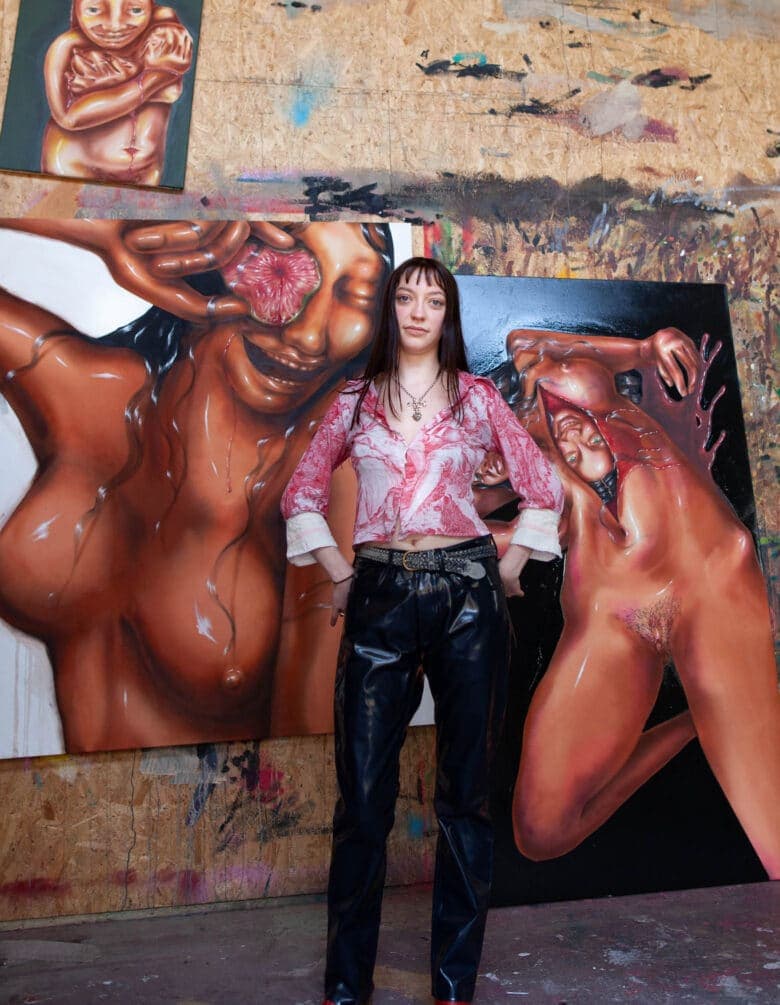
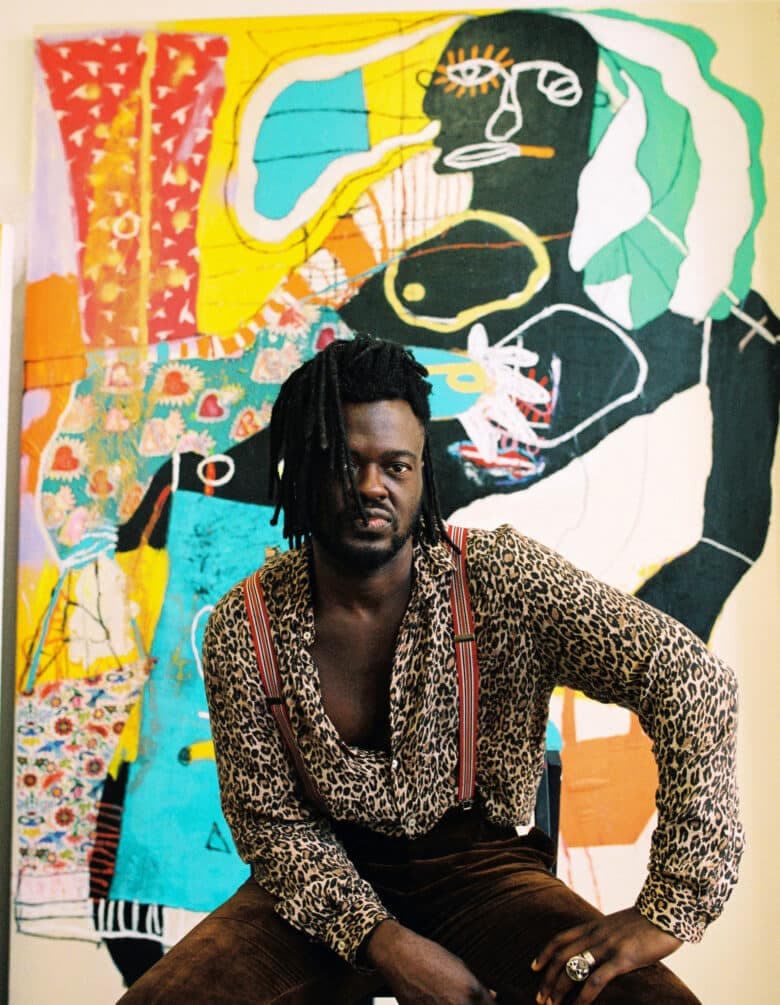
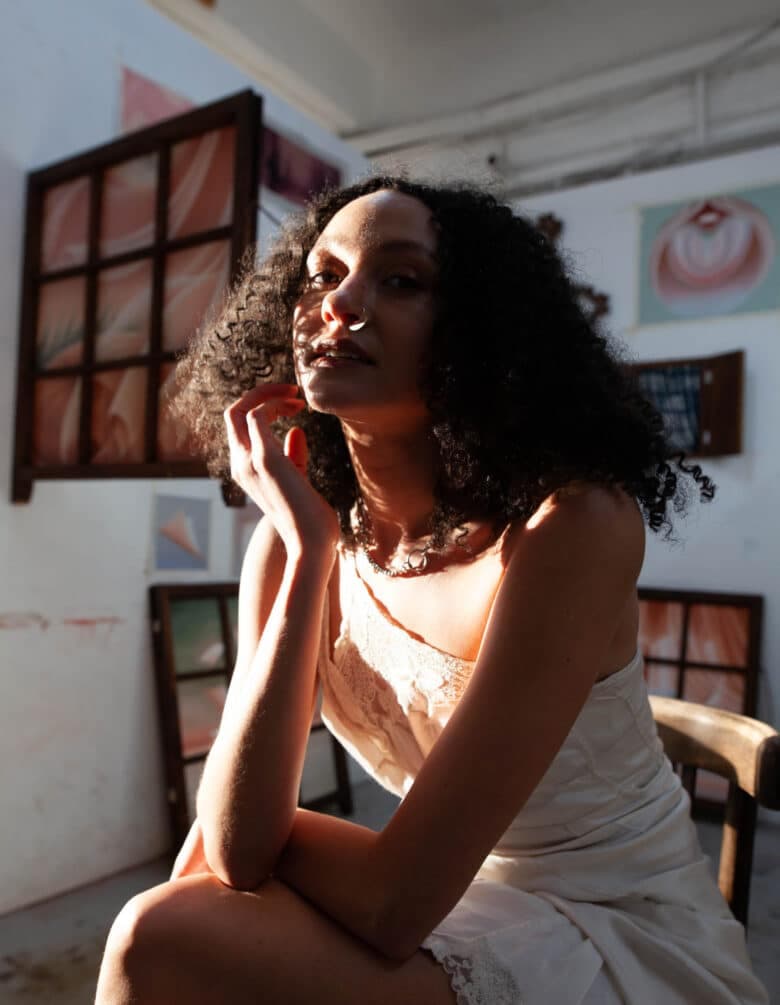
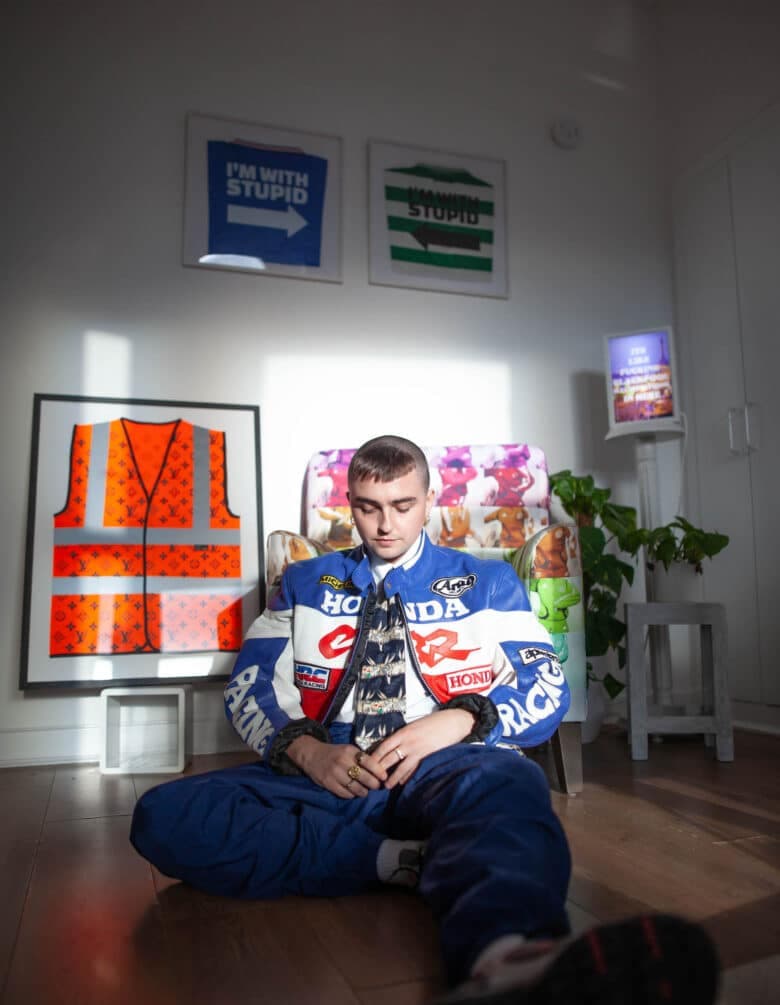
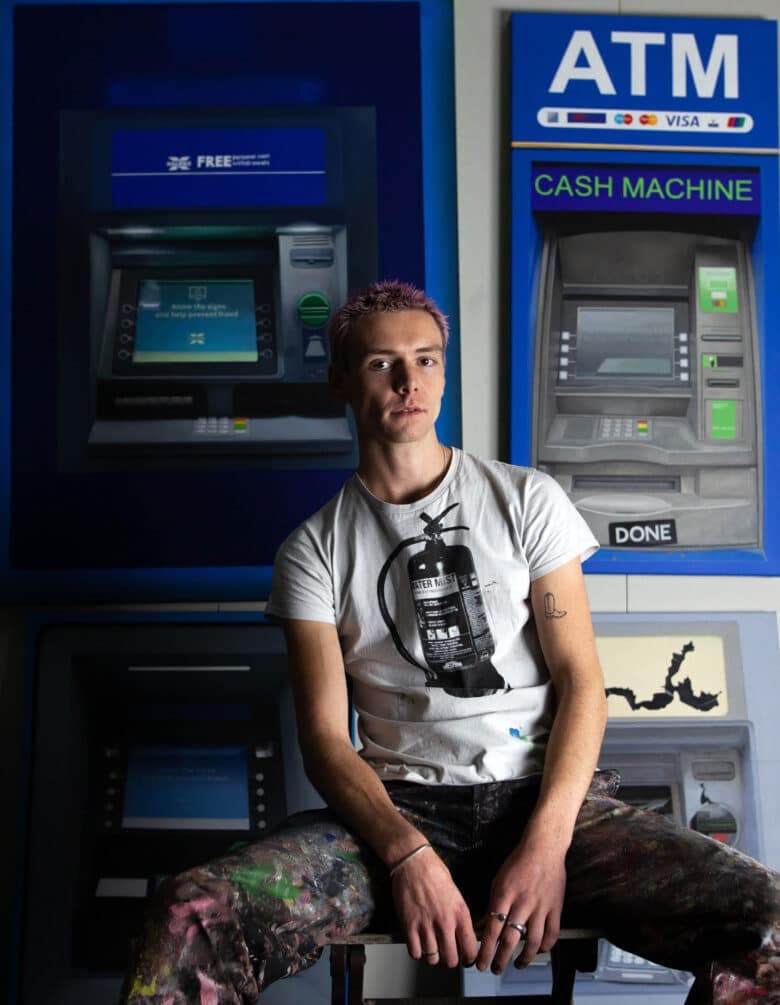
You started out by taking photographs of musicians, right? What are the differences between photographing musicians compared to photographing artists?
When I used to photograph musicians, I would go to gigs to photograph people. I’d go backstage at festivals and I used to meet up and do press shots for magazines… It’s hard to encapsulate the vision of a musician in an image in a way, because it’s not just visuals, it’s also audio. You’re getting across more than just a visual perception of what a person is. When I first started photographing artists, it was much easier to narrow it down to understand visually this is the work that this person has been making for however long, these are the colours that they enjoy, they probably wear their same colours every day themselves, they might look like their work, they might have features similar to the things that they paint or art. So it reflects their personality, their history and their stories.
Who or what was inspiring for you during the making of Artist Portraits?
When I first started doing it, I didn’t really have any references for photograph analysis. I did it just naturally. As I went on, I found books of famous artists through the 20th century and I reference those books. I’d studied contemporary photography s for so many years, that I was trying to aspire to a style. When I first started photographing artists I was doing it so repetitively, so I left all that behind and I took on board older references, a lot of black and white references, and a lot of composition from that. I didn’t refer to contemporary photography quite as much then.
What did you learn about the variations in creativity between artists when going into each of their spaces?
There’s many variations. I feel like if you’re going to be successful, you just have to work hard. I would ask artists what they’re doing later that day, and after a while I stopped asking that question because I knew the answer would just be, ‘I’m gonna paint’. So you see people’s progression through that as well. It’s true, if you went to a particular school, you might have a certain type of art that was referenced more in those studies. But I feel like there’s tons of people in the UK, in the world really, that now have the ability to shine because you can share your work on social media, you can get feedback and make connections and do all that just through posting on Instagram. You can connect so many more dots than you could have back in the day.
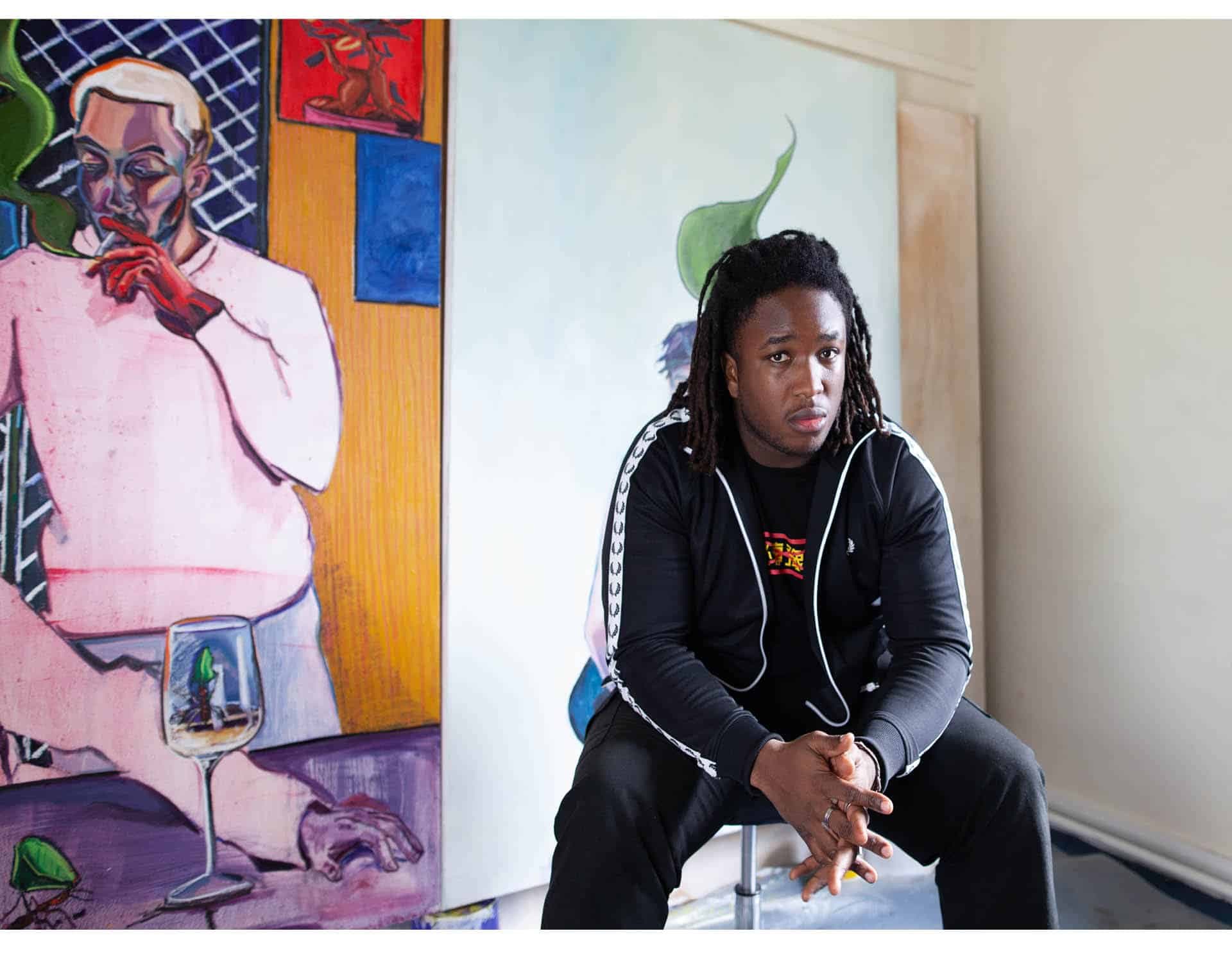
How can you describe the sensation of going into three of four different people’s creative worlds in a day?
It was exciting. You are stepping into someone’s built universe and they spend all their time in the studio making this world, creating art that reflects much about them, their reality, their lived fantasy and the things that they reference about life are impactful. You would walk in there and you would just see all this amazing art that other people might not have the opportunity to see. I didn’t really delve too deeply into the reasons why they make the work. I’m not interested so much in the contextualisation of the art, more just the visuals of it. I was always quite amazed by the talent of these people.
What have you discovered about the creative processes of the artists who you have revisited numerous times?
The best ones just work really hard. For example, Sophie and Douglas [Cantor], they’re a married couple who live in Peckham. I first photographed them in Glasgow and it felt like they were in album mode. You know when a musician is in album mode and they’re just working away and studying a way. It felt like they were isolated in Glasgow working in their apartment every day. They had a studio in there that they shared and that felt quite factual. Then they moved to London and it’s the same thing, they work away all the time in that studio, creating a beautiful world.
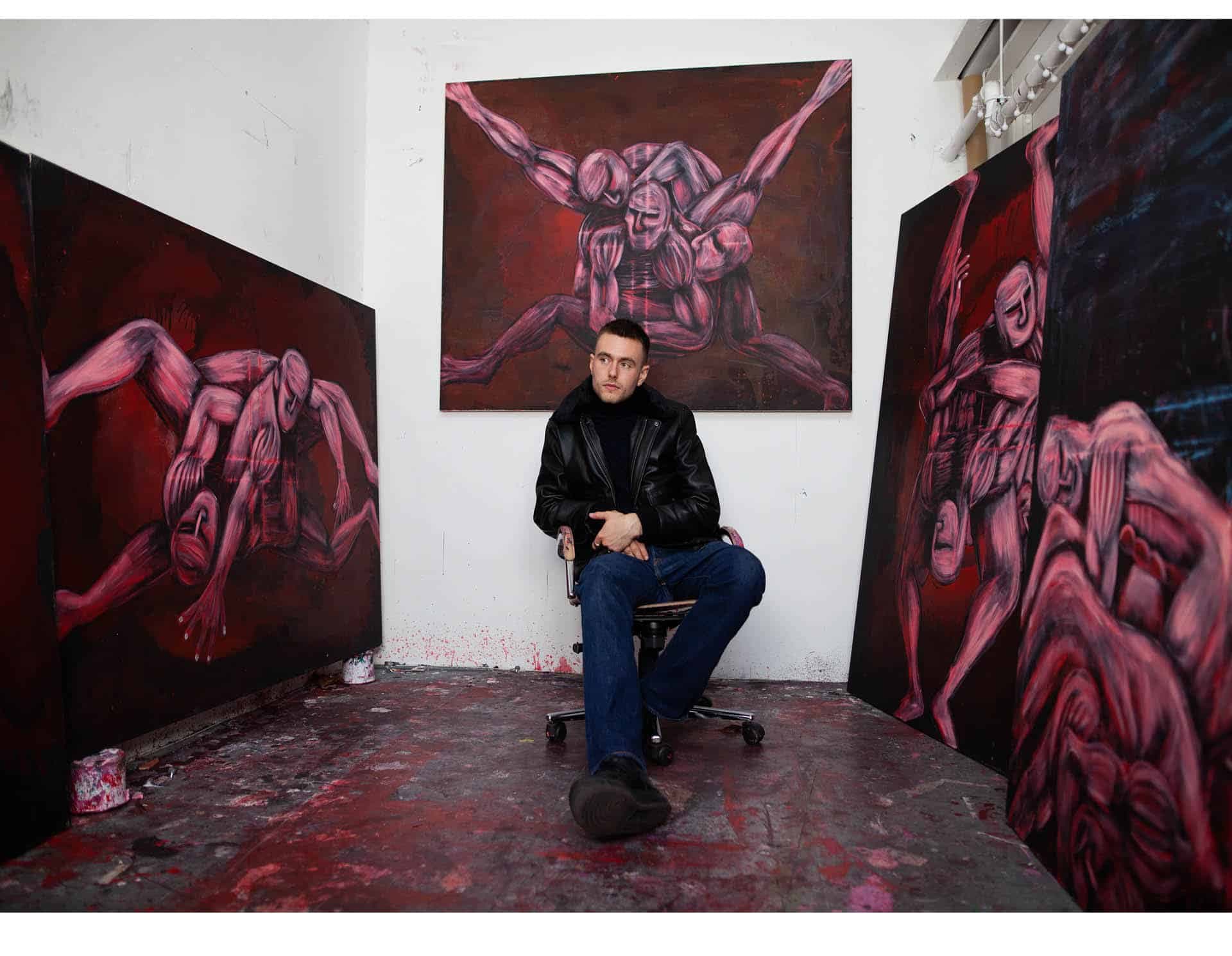
Obviously you took a lot of these photos during the pandemic. Looking back, how did that time affect your own creativity?
It just showed me that I had to commit to it. I’ve been doing photography since I finished uni back in 2018 and I was going for it full time just before lockdown happened. It was quite intense. Then when this project started, I knew I was onto something good and I knew that I needed to do this if I wanted to have a successful topic where I had to really commit. Now I look back and it feels like a dream that I did this work, because now I’m in a different head space, but for that period of lockdown where it was highly strung and anxiety filled, I put all the anxiety into this project… like a baby.
When you started the project, was there any particular message or statement that you had in your mind that you wanted to share, and if so, how has that changed?
The initial one was representation. I wanted to represent a lot of people and show that they were doing good things and working hard. There was a perception as well of, ‘Oh, you should change your career path if you can’t get a job because you are creative’. Remember that on the news? I remember thinking, ‘Nah, fuck this. I don’t wanna do a coding course. I can’t do that shit’.
Photography is my passion in life. I wanted to double down and work a lot harder. And I found kindred spirits that felt the same way, and were committing to that full time. So I wanted to represent these people, these young, talented people, to the best of my abilities. To do that, I felt that I needed to make it as diverse and nationalised as possible and do everything that I could with the resources that I had.
Well, that’s a great note to leave it on. See you at the show!
Artist Portraits is showing at Studio West Gallery 5th – 31st May. Find out more about the show here.
